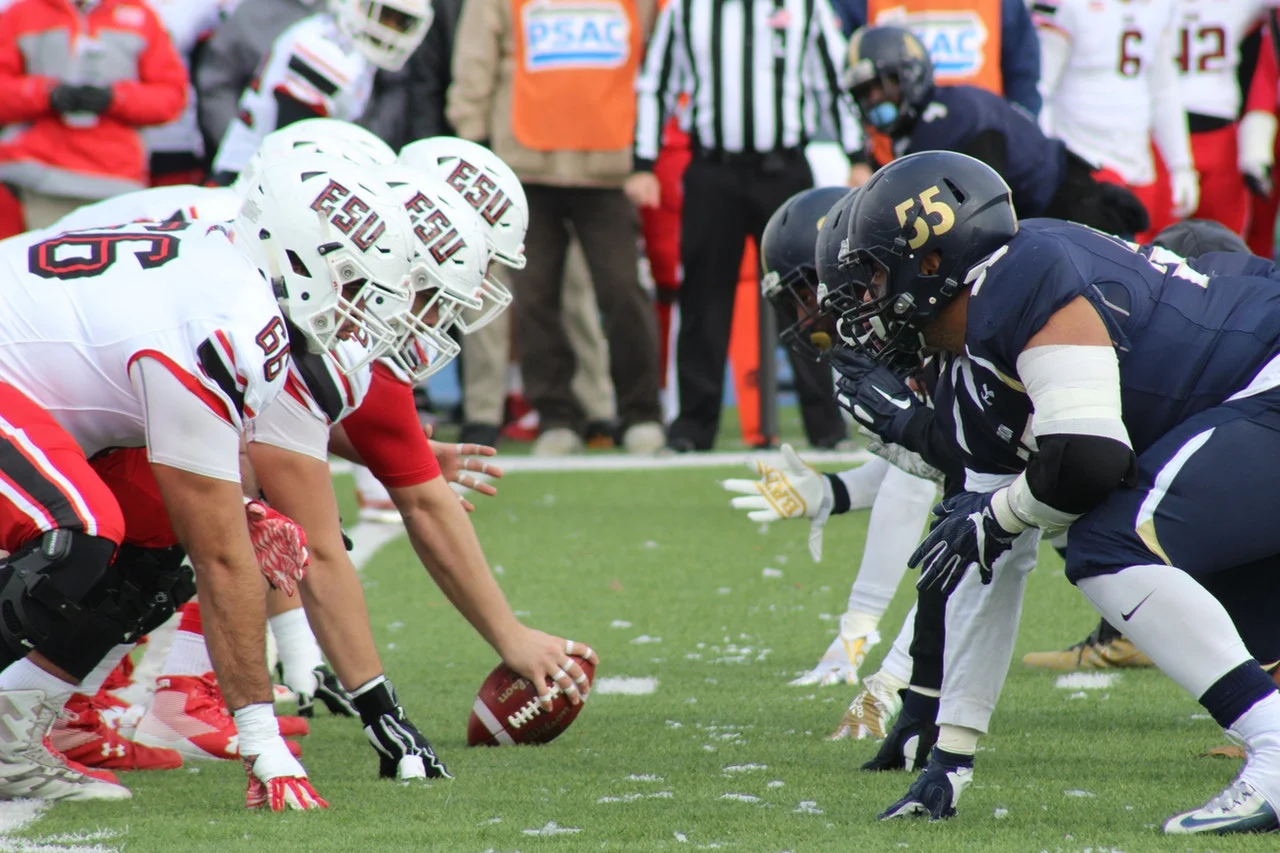The Future of Football: Chronic Traumatic Encephalopathy in Athletes
/By Andrea Binley
Football is the great American pastime. Large numbers of athletes at the youth, high school, and college levels participate in organized football. At the professional level, the sport generates a huge amount of media attention, interest, and revenue. In recent years, however, warnings about the brain injury risks inherent in football have come from retired players, coaches, and medical professionals, along with increased public awareness about the danger of repeated head trauma.
Football (along with other high-contact sports such as hockey, rugby, and soccer) entails a high risk of athletes developing concussion, a type of traumatic brain injury. Such injuries are common in athletes, with an estimated 1.6-3.8 million sport-related concussions occurring annually in the U.S. [4]. Concussions result when an impact jostles the brain, causing it to rotate or hit the side of the skull. Immediate symptoms include nausea, vision blurring, and in some cases, memory loss, speech problems, and unconsciousness [3]. Although concussions were once believed to be a relatively innocuous phenomenon, mounting evidence points to a link between repeated concussions and degenerative neurological disease.
Chronic Traumatic Encephalopathy, or CTE, is a progressive brain disease that, as of now, can only be conclusively identified in autopsy (although there have been promising efforts to detect CTE through neuroimaging of living players) [1, 2]. On a cellular level, CTE occurs when repetitive head trauma produces abnormal proteins in the brain. In normal brains, tau binds to microtubules and functions as a stabilizing agent. As tau becomes hyperphosphorylated as a result of trauma, it is unable to bind, and microtubules begin disintegrating. As a result, unbound tau proteins form neurofibrillary tangles around the brain’s blood vessels, interrupting normal functioning and eventually killing neurons. Degeneration spreads through the brain, resulting in a neuropathology with the following features: 1) mild reduction in brain weight, 2) enlargement of the lateral and third ventricles, 3) thinning of the corpus callosum, 4) cavum septum pellucidum with fenestrations, and 5) scarring and neuronal loss of the cerebellar tonsils [2, 5]. With increasing severity of CTE, atrophy is greatest in the hippocampus, entorhinal cortex, and the amygdala [4]. Once these changes occur, the brain is more vulnerable to further injury and sensitive to stress until it fully recovers.
The effects of CTE can be debilitating. Individuals with less severe forms of the disease can suffer from mood disorders, such as depression, anger, and anxiety, as well as memory issues. As the disease progresses in severity, there is a greater loss of motor functioning, as well as an increase in dementia and Alzheimer’s disease [3, 4, 6]. CTE has been disproportionately found in the brains of former football players compared to normal controls. Researchers have found that NFL players who suffered a concussion showed greater bilateral atrophy in the hippocampus, the brain region that is responsible for memory [5]. Tellingly, a report released by the National Football League stated that nearly 30 percent of former football players are expected to develop long-term cognitive problems [1].
Currently, treatment for CTE is purely preventative. Further research is needed to determine the most effective rehabilitation techniques for athletes suffering from early and late stage CTE. Unless preventative measures, research, and rehabilitation efforts continue to progress, the number of athletes sustaining brain trauma may similarly increase.
References
1. Belson, Ken. “Brain Trauma to Affect One in Three Players, N.F.L. Agrees”. The New York Times 12 Sept. 2014. A1. Web.
2. Buée, Luc, Thierry Bussière, Valérie Buée-Scherrer, André Delacourte, and Patrick R. Hof. "Tau Protein Isoforms, Phosphorylation and Role in Neurodegenerative Disorders. Brain Research Reviews: Web. 4 June 2015.
3. Gavett, Brandon E., Robert A. Stern, and Ann C. McKee. “Chronic Traumatic Encephalopathy: A Potential Late Effect of Sport-Related Concussive and Subconcussive Head Trauma.” Clinics in sports medicine 30.1 (2011): 179–xi.PMC. Web. 1 June 2015.
4. McKee, Ann C. et al. “Chronic Traumatic Encephalopathy in Athletes: Progressive Tauopathy Following Repetitive Head Injury.” Journal of neuropathology and experimental neurology 68.7 (2009): 709–735. PMC. Web. 1 June 2015.
5. Strain JF, Womack KB, Didehbani N, et al. Imaging Correlates of Memory and Concussion History in Retired National Football League Athletes. JAMA Neurol. Published online May 18, 2015. doi:10.1001/jamaneurol.2015.0206.
6. Mckee, Ann C., Robert C. Cantu, Christopher J. Nowinski, E. Tessa Hedley-Whyte, Brandon E. Gavett, Andrew E. Budson, Veronica E. Santini, Hyo-Soon Lee, Caroline A. Kubilus, and Robert A. Stern. "Chronic Traumatic Encephalopathy in Athletes." Journal of Neuropathology and Experimental Neurology (2010): 709-35. PubMed Central. Web. 4 June 2015.



